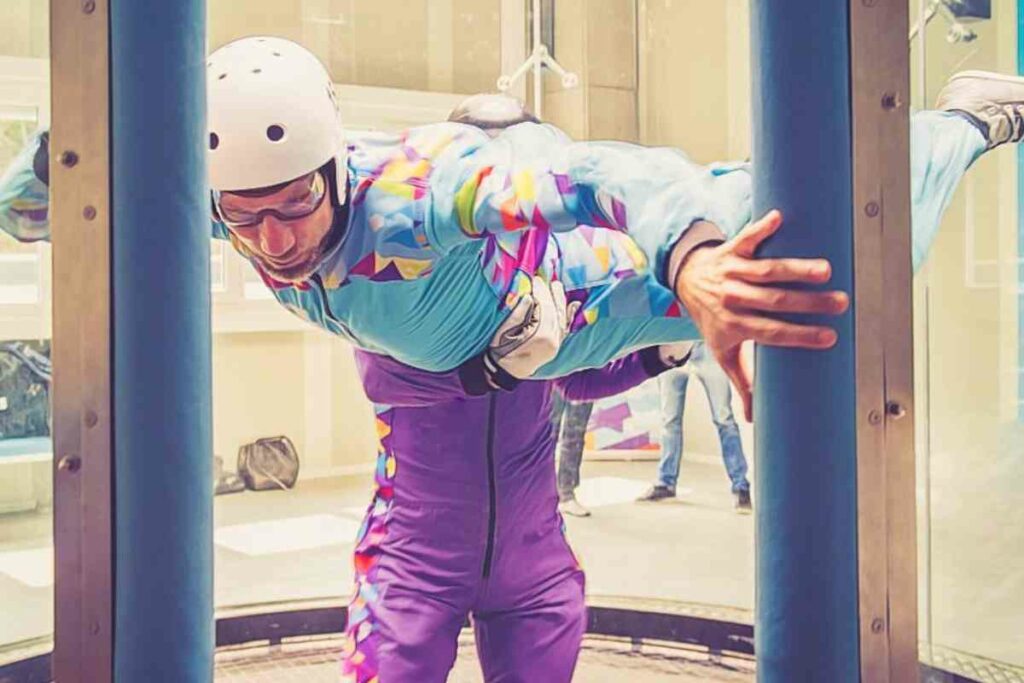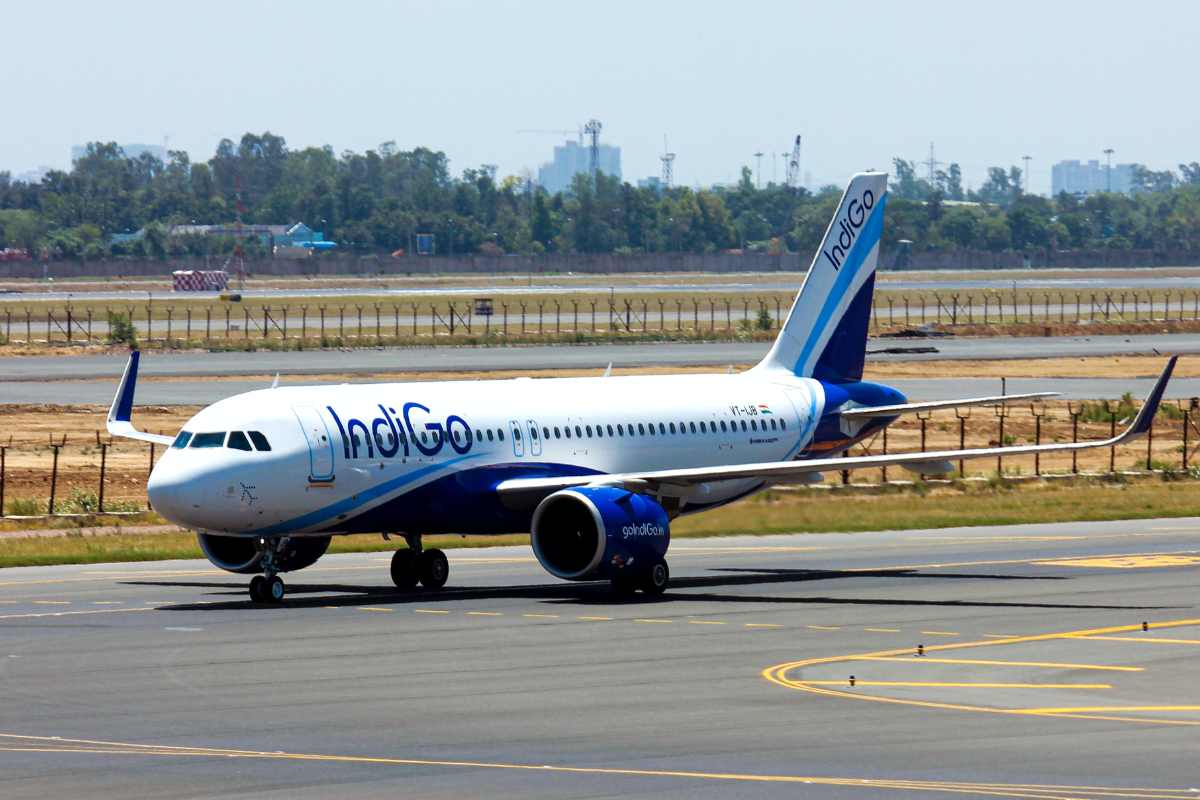Both indoor skydiving and regular skydiving are entertaining activities.
Whether indoor or outdoor skydiving, you experience the sensation of freefall. But that’s about all indoor skydiving and outdoor skydiving have in common.
This article explores the difference between indoor and outdoor skydiving.
Indoor Skydiving Vs. Outdoor Skydiving

Save for a few similarities, indoor skydiving, and its outdoor counterpart are vastly different activities.
Below, we explore the key differences between indoor and outdoor skydiving.
Read before you go – Can You Indoor Skydive If You Have a Medical Condition?
How It Works
Freefall is part of skydiving from the moment you jump out of the aircraft and descend through the sky at 120mph to when your parachute deploys.
A conventional skydiving experience involves:
- Plane flight
- Parachute ride
Indoor skydiving doesn’t involve the above, simulating freefall conditions using wind tunnel technology.
Giant fans in the wind tunnel pump fast-moving air through the vertical tunnel. The strong winds create a smooth cushion of air that can lift a human through simple drag.
Setting
As far as the setting is concerned, the difference between indoor and outdoor skydiving is quite apparent.
Indoor skydiving happens in a highly controlled environment behind closed doors. You get to experience the sensation of freefall only a few feet above the ground.
Outdoor skydiving, on the other hand, embraces the chaos. During a conventional skydive, you jump out of a plane equipped with a parachute and feel the thrill of freefall 10,000–15,000 feet in the sky.
Cost
Experiencing freefall costs money, whether you strap on a parachute and jump out of a moving aircraft or visit an indoor skydiving facility. The difference is the amount you have to part with for the experience.
A skydiving session will set you back about $300 on average. In comparison, a wind tunnel flight at a standard indoor skydiving facility only costs about $60 for a 60–120 seconds flight.
Indoor skydiving gives you a taste of the experience at a fraction of the cost.
Who Can Participate
Another apparent difference between indoor and outdoor skydiving is in who’s allowed to participate.
Indoor skydiving is a pretty inclusive activity.
Anyone between ages 3-103 can participate, with a few exceptions based on the following:
- Weight. Indoor skydiving has weight restrictions, with most facilities enforcing a 250-pound weight limit for participants.
- Injury history. If you’ve previously dislocated your shoulder or have had any serious physical injury, you’ll not be allowed to take a flight.
- Overall health. You cannot take a wind tunnel flight if you have heart problems. Note that persons with disability can go indoor skydiving.
On the other hand, outdoor skydiving has far more rigid restrictions regarding who can participate.
For instance, the minimum age to go skydiving is 18 years. This extreme activity also excludes persons with disability.
Weather
Another difference between indoor and conventional skydiving has to do with the weather.
Indoor skydiving, as you’d expect, is not subject to weather and can operate all year round. In other words, you can go indoor skydiving at any given time of the year.

On the other hand, outdoor skydiving has regulations based on temperature, clouds, wind, and precipitation.
Due to bad weather, skydivers often postpone or extend skydiving operations for long periods — sometimes even cancel them altogether.
Risk Involved
During a skydive, you must strap on a parachute and jump out of a plane at 10,000 feet. This activity has many moving parts, and anything could go wrong.
On the other hand, indoor skydiving is relatively risk-free. Of course, accidents can happen, but it’s rare.
This is not an exhaustive list of indoor and outdoor skydiving differences.
Here are a few additional examples of the difference between the two activities:
- Outdoor skydiving has a steeper learning curve compared to a wind tunnel flight.
- Outdoor skydiving offers a canopy ride to the ground, which can’t be replicated in a wind tunnel.
- Indoor skydiving is more beginner-friendly compared to actual skydiving.
- Indoor skydiving is also a sport, while skydiving is more of a hobby.
Prepare yourself for an electrifying adventure in indoor skydiving with this indoor skydiving beginner’s guide, brimming with crucial advice and expertise.
Conclusion
There are lots of differences between indoor skydiving and outdoor skydiving. Both ways of experiencing freefall have their pros and cons.
If you dream of flying, defying gravity, and experiencing freefall, indoor and outdoor skydiving can help you scratch that itch.







